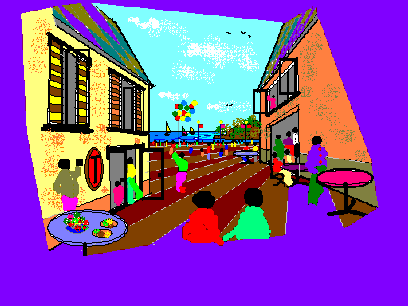|
What Macs & Starbucks Can Tell You
Stephen Chung Managing Director
Zeppelin Real Estate Analysis Limited
April
2004
First thing first, whatever real estate analytical techniques if any introduced below are not professionally proven, highly researched, and vigorously verified ones, yet they may be easy to understand and apply, good for less than diligent observations or when time does not allow for in depth analyses. You have guessed it right, they have something to do with the famous fast food chains such as McDonalds (or equivalent) and coffee chains such as Starbucks (or equivalent). The underlying parameter is that the character and nature of a city eventually depends on the people that reside and live in it, who in turn / also affect the real estate pattern, usage, type, and value, and the prevalence / non-prevalence of McDonalds and Starbucks (or their equivalent / close seconds) would give some hints of the mix, structure, and habit of the populace, and thus ultimately offer some insight into certain aspects of the real estate market, past, present, or future. We are referring to cities in developing economies such as China. McDonalds (or equivalent) symbolizes not only the acceptance level of things foreign, but also the yearn for different dining habits and foods, or even a varied lifestyle, though for many they would still prefer their traditional foods and cooking most of the time, i.e. they consume McDonalds not necessarily because they deem it more delicious than their traditional foods, but they just wish to eat / do something different some of the time. McDonalds also symbolizes good fun family dining, and kids are one of the main reasons parents end up bringing them into the restaurants. And McDonalds meals, while seen as being very affordable in developed economies, are a luxury for most residents in developing economies, including cities such as Beijing and Shanghai. Hence, the number of McDonalds compared to the population, GDP (per capita), demographics, household income, and the like, and comparing the same to a developed city, would give a relatively good indication of the prevalence of middle-upper class families in any given developing city, especially ones with kids and teenagers. Starbucks (or equivalent) dwells less on the concept of families enjoying a meal together but more on friends, professionals, and executives (Yuppies, Dinks or what have you) meeting in a modern collegiate setting having intelligent, interesting, or inspiring conversations. While McDonalds may have outlets in both middle class and luxury neighborhoods / commercial districts alike, Starbucks are seen mostly in trendy Grade A locations. Hence, its prevalence or the lack of it may reflect on the size and spread of the professional / executive / college-educated strata, emerging though this group may be. Again, benching marking their numbers (of outlets) against the economic statistics may give a hint of the possible growth and development. Real food for thoughts. Notes: The article and/or content contained herein are for general reference only and are not meant to substitute for proper professional advice and/or due diligence. The author(s) and Zeppelin, including its staff, associates, consultants, executives and the like do not accept any responsibility or liability for losses, damages, claims and the like arising out of the use or reference to the content contained herein. |
Phone (852) 37576388 Fax (852) 37576399 E-mail contact@real-estate-tech.com
Address c/o Zeppelin, Unit 1007, 10/F, CCT Telecom Building, 11 Wo Shing Street, Shatin, NT, Hong Kong
Copyright rests with Zeppelin and/or relevant authors
